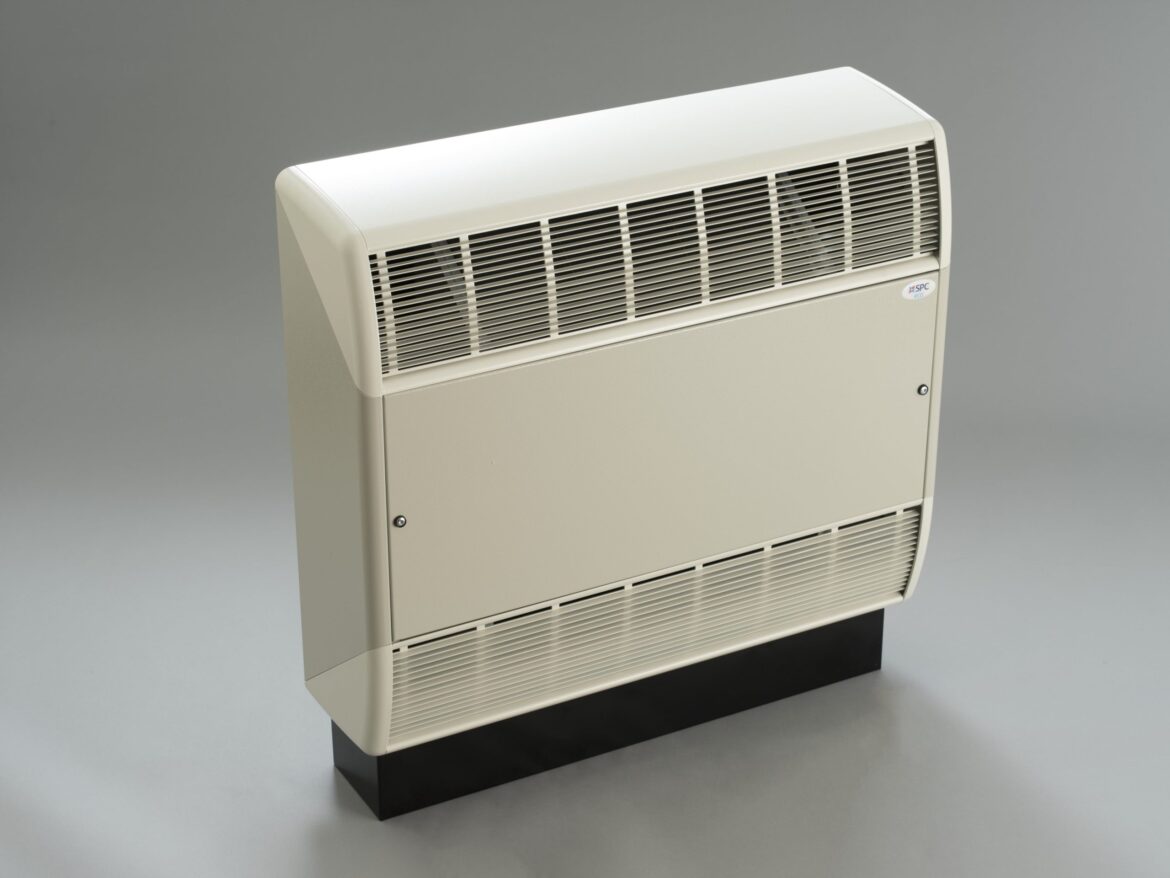12
If you use convector heating as your standard heating system, you should take into account the high power consumption. Find out more here.
Power consumption and costs of convector heating
Convector heating works with electrically heated wires through which air is sucked in, heated, and then released back into the room. This allows a room to be heated up very quickly – but at a comparatively high energy consumption.
- An example: A convector heater with a power rating of 1,500 watts consumes 1.5 kilowatt hours of electricity per hour. If it is operated in a home office for around eight hours a day, this results in a daily consumption of around 12 kilowatt hours. At an average electricity price of around 39.6 cents per kilowatt hour (as of 2025), this results in daily costs of around €4.75.
- By way of comparison, a smaller convector heater with an output of 1,000 watts consumes around 5 kilowatt hours when used for five hours, which equates to around €2 in electricity costs per day. A more powerful model with 2,000 watts running for four hours requires around 8 kilowatt hours, or a good €3 per day.
- These figures illustrate that operating a convector heater over longer periods of time has a significant impact on the electricity bill. As a permanent main heating source, it is therefore not economical in most households. It is particularly recommended for short-term heating of individual rooms that are rarely used or have no other heat source.
Comparison of convector heating with other types of heating
Compared to other heating systems, convector heaters are less efficient because they convert electricity directly into heat.
- Infrared heaters do not heat the air, but rather objects and people in the room. This creates a different sensation of warmth, which is often perceived as more pleasant. An infrared heater with a power output of 700 watts consumes around 3.5 kilowatt hours when used for five hours a day – less than a typical convector heater. Nevertheless, the operating costs are still higher than for modern heat pumps.
- Heat pumps use environmental heat from the air, ground, or groundwater. They generate an average of three to four kilowatt hours of heating energy from one kilowatt hour of electricity, making them significantly more efficient. The initial cost of the heating system is higher, but this is offset over the years by the lower electricity consumption. In addition, many heat pumps can also be used for cooling in the summer.
- Fan heaters are similar in design to convector heaters, but usually operate without a fan to circulate the air, making them slightly noisier and less efficient. They are only suitable for short-term heating of small rooms.
Efficiency, advantages and disadvantages in continuous operation, and current developments
Convector heaters offer a number of advantages: they are quick to set up, inexpensive to purchase, and do not require any complicated installation—all you need is a power outlet. This makes them particularly practical in garden sheds, vacation homes, or as a temporary solution in poorly heated rooms.
- However, there are significant disadvantages in continuous operation: Power consumption is high, which not only puts a strain on your wallet but also on the environment if the electricity does not come from renewable sources.
- In addition, the constant heating and circulation can quickly dry out the air, which affects the indoor climate. If the heater is only switched on occasionally and the room then cools down again significantly, this can promote moisture on cold walls – a risk for mold growth.
- Efficiency tips: Use timers or thermostatic sockets to control when the heating is on. Only heat rooms that are actually in use and keep doors closed to prevent heat loss. Improve the insulation on windows and doors to reduce heat loss. It is also advisable to only use convector heating with green electricity or as a supplement to a more energy-efficient main heating system.
- Current developments: Electricity prices in Germany will average around 39 to 40 cents per kilowatt hour in 2025. In some regions and with special tariffs, prices around 30 cents are also possible. Subsidy programs currently focus on energy-efficient heating systems such as heat pumps or building renovations. There is generally no government subsidy for purely electric direct heating systems, such as convectors, as they are considered less efficient than other heating methods.

